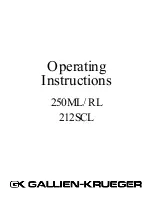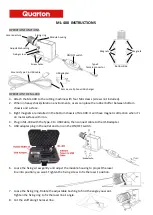
22
Emergency Procedures
Problem Management
Inflator problem
Inflators may fail due to foreign material in the mechanism, damage from impact
by tanks or weights, or other causes.
Practice
the procedures below (in a safe
location with your buddy) for your safety.
Inflator fails to operate
Check to see that the low pressure hose is properly connected. Orally inflate the
bladder if necessary to establish proper buoyancy.
Inflator valve sticks open
Should the inflator valve stick open, causing an uncontrolled filling of the bladder
and/or excessive leakage of air at the inflator, hold exhaust valve open and over
your head to vent excess air as you disconnect the low pressure hose from the
inflator. Abort the dive.
Exhaust valve or over pressure valve sticks open
If the exhaust valve on the inflator sticks open, hold the inflator in the lowest
position possible, to allow the bladder to hold air from that level up. Abort the
dive and attempt to swim slowly, 1 ft per 2 sec (0.3 m per 2 seconds), or less, to
the surface. Should excessive negative buoyancy be created, your weights may
need to be released. Weight release at depth should only be done according to
the standards set by your certification agency.
Failure to hold air
If for any reason the system should fail to hold an adequate amount of air to pro-
vide necessary buoyancy, abort the dive and attempt to swim slowly, 1 ft per 2
seconds ( .3 m per 2 seconds) or less, to the surface. Should excessive negative
buoyancy be created, your weights may need to be released. Weight release at
depth should only be done according to the standards set by your certification
agency.
The above is based on recreational no decompression diving. Decompression
divers must have complete redundant systems to handle all problems underwa-
ter.
If at any time abnormal performance or malfunction is experienced, the
system must be serviced by an authorized Zeagle Dealer prior to any
further use.





































